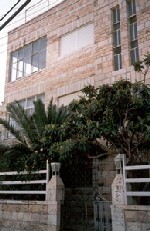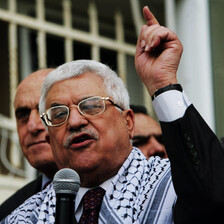
The siege on Palestinian towns and villages has still not been lifted. Despite following the conflict daily before I arrived here, three weeks later I’m still trying to grasp the reality of the situation. Reading articles in newspapers, watching the television news, and listening to the radio, there is a gulf between the harshness of reality of daily life for Palestinians living in the Occupied Territories and the media reality.
The term “cease-fire” at this stage is far removed from the reality of a war being waged by a sophisticated, well-financed, and well-equipped (with US-made weapons) Israeli army against a largely impoverished Palestinian civilian population. The Israeli army has used heavy weaponry usually used in full combat warfare to regularly carry out bombings and shootings of civilians in their homes, schools, hospitals, and workplaces — where there is no genuine security reason or ‘military necessity’, the key exclusion in the Fourth Geneva Convention that permits an occupying power to defend itself.
The average Palestinian who is being punished on a daily basis does not understand the meaning of “cease-fire”. For my friends in Ramallah, an “end to the violence” means first of all an end to the Israeli imposed siege on villages and towns. Secondly, it means an immediate end to the humanitarian crisis that has arisen from this intensified siege and Israel’s deliberate policy of crippling the Palestinian economy.
For example, there are now more than one million Palestinians living under the poverty line. In March, the International Red Cross stated its fears that the most destitute families will begin to starve. Due to the siege, villagers have been cut off from main Palestinian towns upon which they rely for crucial supplies such as food, and medicines; work, schools and university, hospitals and field clinics. Some Palestinian towns and villages have been literally locked up. Gaza has been turned into a the largest prison of them all.
Talking to neighbours and friends, it is not hard to sense the frustration and desperation here, in particular among the poorest community, the refugees.
“Little hope remains”, says one of my colleagues, sharing his frustration with the situation and the response from the international community.
“We are perceived as animals and beasts”, said Ali, one of my neighbours, reflecting on images perpetuated in the media that assist in the dehumanisation and demonising of Palestinians by failing to report even the names or basic facts about Palestinians killed. The wider international community is prevented from seeing the human face of a people struggling against apartheid and colonialism.
Ali clearly remembers the death of 10 year-old Muhammad Nasser from the neighborhood. Two months ago, on March 17, Muhammad’s body was found near Neve Ya’kov, an Israeli settlement opposite Dahyat al-Barid.
Muhammad had left his home for a playground near the settlement where he used to meet his friends. When he had still not returned home that evening, his family began looking for him. Muhammad’s uncle, Tawfiq Nasser, told LAW that the family began searching again at 7.30 am the next day, two of Muhammad’s relatives, 27 year-old Hassan Nasser and 39 year-old Fayez Nasser, found his body wedged between two boulders about 20 metres away a school in the settlement.
Muhammad’s face was deformed and his skull and teeth had been broken. On the back of his head were signs of torture. His back, chest and feet were bruised and his right wrist had been sliced open by a sharp tool.
His parents stated that the Israeli police arrived on the scene at 4.00 pm and took the body away for an autopsy in Abu Kbeer. At 11.00 am on Monday, the child’s body was returned to his parents. When the family informed the Israeli police they intended to bury him in their cemetery plot at Al Sbat Gate in East Jerusalem. The police allowed them to with one condition: that the funeral take place at midnight, with only a few relatives present. Instead, the family decided to bury Muhammad at the cemetry in Dahyat al-Barid.
Ali sighs deeply. This event still leaves marks on my neighbours.
The current “cease-fire” does not include the cessation of devastating violations of human rights in all aspects of daily life, including deaths resulting from denial of access to humanitarian aid and services.
The “cease-fire” does not affect the assistance of the Israeli occupation forces to settlers randomly attacking Palestinian civilians.
The “cease-fire” did not prevent the killing of 65 year old Nasra Malalha, her 17-year-old daughter Hikmat and 37-year-old Salima al Malalha. On Saturday night, an Israeli tank fired four shells that exploded near their tent.
Since Israel “unilaterally imposed a cease-fire” thirteen Palestinians have been killed.
Talking to my neighbours it becomes clear that eight months after the eruption of the Intifada support for its continuation remains high. The average Palestinian has already paid a price much too high. A settlement freeze for them is not enough. The Intifada for them is about ending the occupation.


